A
adenl
Guest
"Thar she blows, captain!" Beautiful lines on this ship. I wonder when we will see MKE(K)'s 76mm naval gun..
Last edited by a moderator:
Latest Thread
"Thar she blows, captain!" Beautiful lines on this ship. I wonder when we will see MKE(K)'s 76mm naval gun..
According to the Raytheon who are the manufacturers of the missile system the more powerful rocket motor has doubled its performance and cut down reaction time by half.According to official source RAM block 2 less capable than you claim. You can't engage helis from RAM. However I wouldnt choice a defence system half against helis, half against cruise missiles. For warships main threat is missiles so navies must pick the most reliable defence systems against missiles apart from helicopters.
İn the middle of the open sea stinger, sungur , RAM can't hit any enemy helis. They wouldnt be more efficient than 76 mm cannon against helis.
Because enemy helis wouldn't fly close to the the warships.
we also should forget about engaging cruise missiles with SUNGUR which is Stinger equivalent. İt is impossible.
nonetheless block 2 has larger shape. RAM launcher occupies area as same as Gökdeniz.
RAM and Gökdeniz are two different point defence system with same range while RAM ( C-Dome) gives 360 degree cover.
View attachment 10430
As you can see Block2 has just 10km range, i assume flies not higher than 3500 meter altitude.
Edit: According to above-mentioned info , FAC will use RAM Block 1 which is less capable.

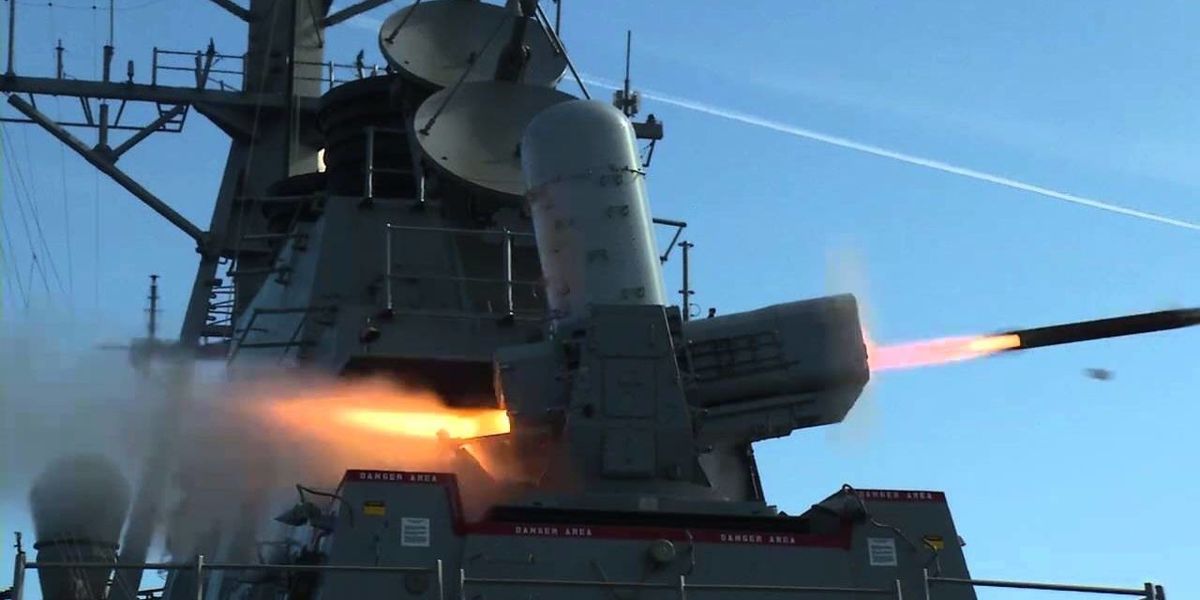
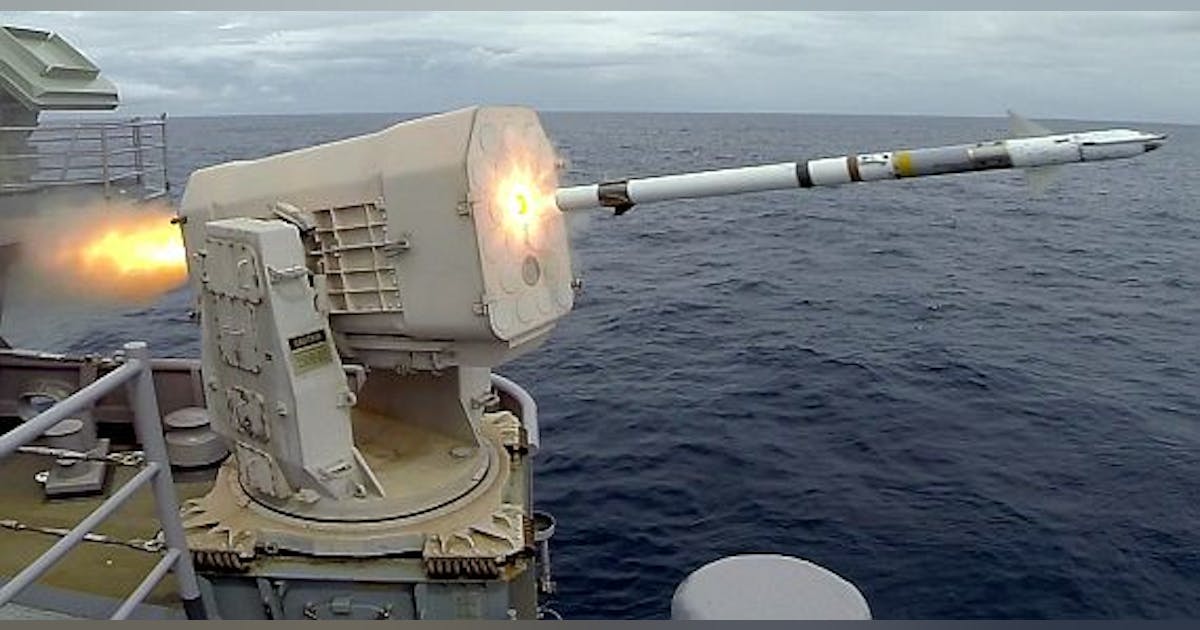
| RIM-116A/B RAM | RAM Block 2 | |
|---|---|---|
| Target's Max Altitude (meter) | 6,100 | 8,100 |
| Target's Min Altitude (meter) | 1.5 | 1.5 |
| Warhead (kilogram) | 9.1 | 11 |
| Weight (kilogram) | 74.4 | 88.2 |
New İbrahim Sünnetçi article
View attachment 10378
View attachment 10377
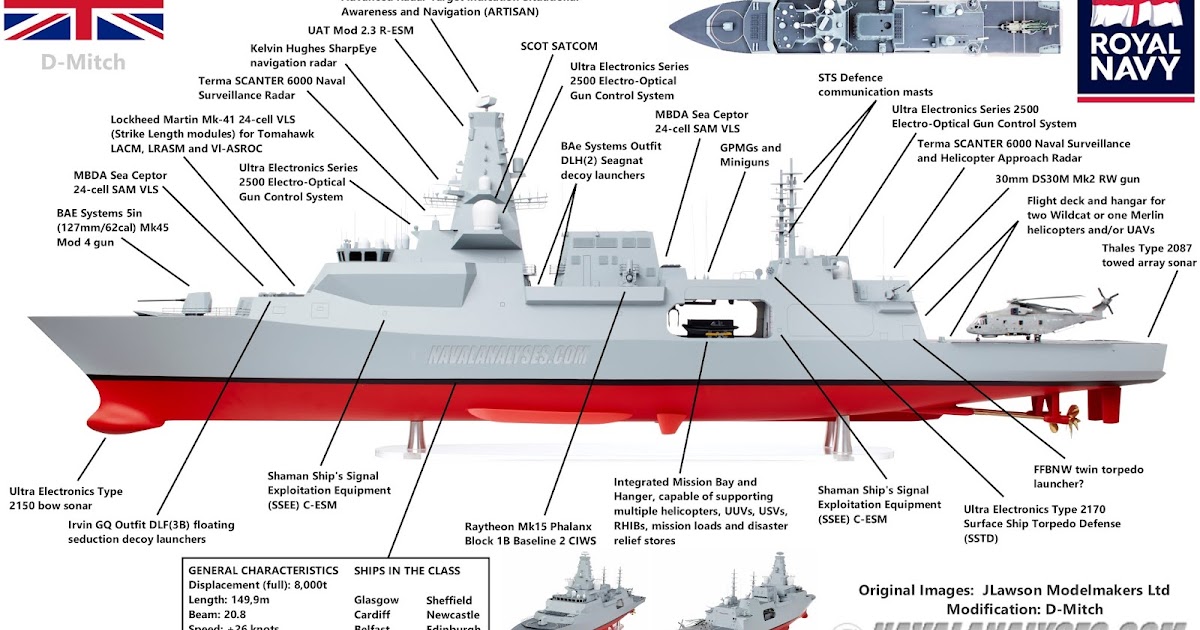
INFOGRAPHICS #43: Future Surface Combatants Vol. I (Type 26, MMSC SA, Sa'ar 6-class)
Written by D-Mitch In this post, I include some of the infographics I made and published on social media, about new surface combatants t...www.navalanalyses.com
Turkish C-RAM concept developed under the main contractorship of Aselsan will provide great capabilities because the structure will be consisted on Korkut 35mm with new Atom munition (special variant of Atom for C-RAM missions with increased number of tungsten pellets) and C-RAM missiles developed by Roketsan. The whole structure will be called as Golden Cage. This concept will be applied to Naval platforms (Gökdeniz + Naval variant of C-Ram missile) so I hope they left enough space to integrate additional C-Dome equivalent missiles inside the hull of I class frigates in future.
we are looking forward to seeing 20mm gatling gun with Gökdeniz then.
Gökdeniz is quite bulky and as the tweet says isn’t very adaptable on many naval platforms.
I always imagine a Porsav sized ‘missile’ achieving range of sakarya would be absolutely perfect, so that is what I hope we work towards.Those ranges and altitude is given for multiple (way more than a typical AA missile) maneuvers in midflight the target can be updated several times. It is specifically designed to intercept highly maneuverable, sub-supersonic missiles. It can intercept less maneuverable hyper-sonic at greater ranges.
Especially for helicopters the altitude and range could be higher, yet why a helicopter would fly at higher altitude and reveal itself to the radars?
RAM isn't a simple missile to make also, it is not the only way to develop an effective point defense system. The seekers are the troublesome part, if they find a way to fit a RF seeker into that tiny diameter along with an IR-IIR sensor then it won't have to roll.
The missile got to be small as much as possible for rapid acceleration, fired at different angles to engage faster, also enough large to have propellant to reach 10-15 km range with multiple maneuvers.
Gökdeniz is quite bulky and as the tweet says isn’t very adaptable on many naval platforms.
Unfortunately it's in Turkish only as far as i can see. So, for non-Turkish members i've tried to translate it to English with minor changes in order to make it easy to understand out of the complex Turkish sentences. Enjoy....
STM Signature in Turkish Type FAC Project
Within the framework of the task of establishing and maintaining sea control in the operation areas of the Turkish Naval Forces Command; The Period-I Design Contract for the Turkish Type FAC Project, which was initiated by the Defense Industry Presidency (SSB) in 2013 in order to destroy / neutralize enemy elements and ensure the survival of its own elements, was signed with SSB and the Main Contractor STM Savunma Teknolojileri Mühendislik ve Tic. A.Ş on August 31, 2020.
02 January, 2021
In the projects section of STM's website on December 29, 2020, the following information regarding the Turkish Type FAC Project Period-1 Design Contract is shared:
“Within the scope of the contract to be executed by STM as a main contractor, the system requirements, concept selection, preliminary design and contract design activities of Turkish Type FACs will be carried out. During the project, Original Design development activities (Boat Form Optimization, Ship Structural Analysis, Main Propulsion System, Ship Electrical System Design, Weapon Configuration) and their design package will be developed.
As stated above, the Period-I Contract in question is only for the design process and a separate contract will be signed for the construction process.
According to the information we have obtained, STM will present multiple designs that will contain a number of differences in terms of both propulsion system, weapons and equipments, under the Period-I Design Contract with a 24-month calendar, and will have a 30-month calendar following the selection of one of these designs by the SSB / TN. After the signing of Period-II Prototype Construction Contract, the first boat will be built at the appropriate shipyard (at this stage, I think the prototype boat will be built at Istanbul Naval Shipyard). Thus, the first ship of the Project will be delivered to TN within 54 months.
It’s not clear yet that, after the Term-I Contract, whether the Project will continue under STM as main Contractor as in Test and Training Ship (TVEG) and Istanbul Class Frigate Projects, or by a private sector shipyard that will win the tender, as in the DIMDEG Project (SEFİNE Shipyard was chosen for DİMDEG).
Starting from the feasibility phase, within the scope of the Turkish Type FAC Project, a project that STM has been working on for a long time and giving much importance, a design named FAC-55 (FAC - abbreviation of the English initials of the Fast Attack Craft, 55 emphasizes the speed the boat can do) and conducted the pool tests. STM proved that it has designed a naval platform that performs effectively up to a speed of 55+ knots for the FAC-55, in its testing activities at internationally competent institutions.
Under the Term-I Contract, the main propulsion system and weapon configurations in the boats will be considered as optional within the framework of CAATSA sanctions announced in mid-December 2020 and embargoes implemented for several years. The replacement of foreign-sourced weapon and sensor systems in the FAC-55 design that emerged five years ago with domestic and original design products (for example, MKEK's 76mm cannon instead of the 76mm cannon made by Leonardo / Oto Melara, ATMACA B1 / B2 instead of RGM-84L Harpoon Block II Anti-Ship Guided Bullets, 21-cell Mk49 Mod 3 Launcher and RIM-116 Block 1A / HAS Missiles instead of GÖKDENİZ CIWS, SUNGUR PMADS or SAPAN / HİSAR-A + systems) and COGAG (Combined Gas Turbine and Gas Turbine) architecture, that is, it will consist of two separate gas turbines, and in the main propulsion system, there will be more than one option that will include a gas turbine option suitable for ITAR / CAATSA sanctions.
TURKISH NAVY AND FACs
Attack Crafts are warships of low tonnage and high maneuverability. Their high speed and small silhouette make them an indispensable option for offensive type operations. These ships, which are well armed for their size, are economical. Thanks to their high speed, attack crafts can quickly move from one sector/region to another and affect the target in a very short time. As an important part of the war concept in coastal waters, attack crafts are the most effective platforms that can be used in the Aegean Sea.
The first torpedo boats in the Turkish Republic Period; was built by Breda in Venice, Italy in 1930, brought to Turkey on the deck of a commercial ship, and entered into the service in September 15 1931. The gunboats named Doğan, Martı and Deniz Kuşu (Hawk, Saegull and Sea Bird in inglish, respectively). In the early 1970s, the DOĞAN Class, Fast Attack Craft with guided missile (FACM), Project was started with the German Lürssen Shipyard. The construction of the first ship, TCG Doğan (P-340), started in Germany on 15 June 1974 and entered service on 23 December 1977. Remaining 7 boats were built in Istanbul Taşkızak Shipyard and entered service in 1978-1988, named; Martı, Tayfun, Volkan, Rüzgar, Poyraz, Gurbet and Fırtına. The last boat, TCG Fırtına, started duty on June 22, 1988. Later, the first four ships were started to be called DOĞAN Class and the other four as RÜZGAR (Wind) Class. With the DOĞAN Class, the RGM-84 Harpoon Block-I Anti-Ship Guided Missile started to be used in Turkish Navy boats, even the first Harpoon Anti-Ship Missile in the history of the Turkish Navy was fired by TCG Doğan. Subsequently, in 1991, a new agreement was signed with Lürssen for the construction of 5 additional ships, and with this agreement, YILDIZ Class TCG Yıldız (P-348) and TCG Karayel (P-349) FACs were built with a different design in Taşkızak Shipyard and put into service on May 23, 1997. Due to the design problem in these ships and in order to catch up with the technology trend, the project was terminated with the 2nd ship TCG Karayel and the construction of KILIÇ Class FACs (9th generation attack crafts in Turkish Navy’s service) was started. The first ship TCG Kılıç (Sword in Turkish) (P-330) was built in Germany at Lürssen Shipyard, and remainin two TCG Kalkan (Shield) (P-331) and TCG Mızrak (Spear) (P-332) at Taşkızak Shipyard. KILIÇ-I Class Attack Crafts entered Turkish Navy service in July 1998, July 1999 and June 2000, respectively. The radar cross section areas of these ships were designed to minimize radar reflections.
The KILIÇ-II Class was built as a continuation of its predecessor, the KILIÇ-I Class Guided Missile Attack Crafts, but unlike them, they have a lower radar cross-sectional area in the hull and upper deck design, including the 76mm gun at the head. The KILIÇ-II Project Contract, which covers more modern boats compared to KILIÇ-I on the basis of sensors and systems, was initially signed between the Turkish MoD and Lürssen Werft on June 19, 2000 covering 4 ships. The contract cost of these 4 ships was Eur 379 Million (US $ 477 Million). With the additional contract signed on 17 July 2001, 2 more ships were added at a cost of Euro168 Million (US $ 211 Million). The first ship of second batch, TCG Tufan, was built in Germany and three of remaining five boats were built in Istanbul Naval Shipyard and last two boats was built in Golcuk Naval Shipyard. KILIÇ-I / II Class Boats can speed up to 42knot and continuous 39knots thanks to the main propulsion system consisting of 4 MTU main engines, 4 propellers and two rudders with a total capacity of 22.000 HP. The youngest ship of the KILIÇ-II Class is the most modern Attack Craft currently in Turkish Navy service and the youngest ship of the class is over 10 years old. The number of boats built, with licence from Lürssen Werft both in Germany and in Turkey, has reached to 35. This number starts from DOĞAN Class and includes KILIÇ-II Class ships. Currently, there are 19 Attack Crafts Turkish Navy service, consisting 4 DOĞAN Class, 4 RÜZGAR Class, 2 YILDIZ Class, 3 KILIÇ-I and 6 KILIÇ-II Class.
Under the KASUMSİS Project, signed in 2015, KILIÇ-I and KILIÇ-II Classes received Aselsan product, 3-axes stabilised X-Band satellite communication system (SatCom) terminal. Within the scope of Ku-Band Satellite Communication System Project, the Aselsan product Ku-Band satellite communication system terminal has been added to the Dogan, Rüzgar and Yıldız Class Boats. The Alarm & Monitoring and Power Management Systems of KILIÇ-I Class Boats are modernized by YALTES. In this context, TCG KILIÇ, equipped with the new generation PİKET 3000® Integrated Platform Control and Monitoring System (EPKİS) of YALTES product, back to Turkish Navy service in March 2020 following the completion of the modernization. The first four DOĞAN Class Boats, which entered service between 1977-1981, were subjected to Half-Life Modernization between 1998-2002. In this context, Fire Control, Electronic Support Measures (EDT / ESM), Communication and Machinery Control / Monitoring Systems of Boats were modernized by the Istanbul Shipyard Command with the participation of Selex Communications and MIKES Companies. Under the project, Turkish Navy signed Doğan Class Integrated Communication Systems Half-Life Modernization Project Agreement with Selex (now Selex ES Turkey) in August 1998. On the other hand, the SUSIE EDT System in on board the Boats was also replaced with the ELDES-21 EDT System from MIKES. The SUSIE EDT System in RÜZGAR Class has started to be modernized with Aselsan ARES-2N EDT System since 2010. With the DOĞAN Class ED System Modernization Project, which was implemented with the contract signed with Aselsan, the replacement of the ELDES-21 EDT systems on the ships with ARES-2N started in 2019. However, due to the frequent machine malfunctions in the DOĞAN Class Boats, the oldest of which is 43 years old, and the main propulsion system being strained at high speeds, it is important to replace these ships with new generation Turkish Type FACs. In DOĞAN Class Boats, 4 diesel engines of MTU 16V956TB91 series with a total capacity of 12.000 HP are used, and W6 maintenance / overholes of MTU 16V956TB91 series diesel machines, which should be conducted every 6 years or every 6,000 hours, can be done at MSB Istanbul Shipyard.
The Adventure of the Turkish Type FAC Project From Past to Present
Launched by the Presidency of Defense Industry (SSB) in 2013 for the domestic supply of 10 new generation high-speed attack crafts of 4 + 6 (option), which will replace the 4 DOĞAN, 4 RÜZGAR and 2 YILDIZ Class Boats in the inventory of the Turkish Naval Forces. Within the scope of the Turkish Type FAC Project, the Request for Information Document (BID / RfI) was first published on 25 July 2013, and the RfI was revised and re-published on 10 September 2013. SSB finalized the RfI Final Report prepared in the light of the responses submitted by the relevant companies and sent it to the Naval Forces Command on December 26, 2014.
In the RfI; besides the firms included in the Defense Industry Sectoral Strategy Document 2009-2016 Marine Vehicles Sector Strategy Section and the other qualified local companies, it was stated that the foreign shipyards that produced the platforms and to be invited in this context can receive the document.
In the revised version, the deadline for receiving the RFI was extended to 11 October 2013, which was previously set as 23 September 2013, and the deadline for submitting the answers was extended from 30 September 2013 to 22 October 2013. Responding to the RfI, ADIK, ARES, Dearsan (first proposed its original design with a single hull 65m long and 45knot speed, and then Norwegian's Skjold Class design as a High Speed Assault Boat with a speed of 60+ knots), Istanbul Shipyard, RMK Marine and Yonca-Onuk Shipyards had the opportunity to introduce their unique solutions to their visitors through the scaled models they exhibited at their booths during IDEF '15 Fair. The Project, whose financial size was estimated at US $ 600 million by the SSB at that time, was run by the SSB Patrol Ship Projects Group.
The project, which was shelved for a long time due to financial difficulties, came back to the agenda in 2018 and a series of changes were made in the requirements. In this context, for example, the speed requirement, which was previously determined as 60 knots, was revised as 45 knots. In 2019, negotiations with STM started and Alper KÖSE, Head of the Department of Naval Vehicles of the Presidency of Defense Industry, made a speech on October 14 at the 9th Naval Systems Seminar held in Ankara on 14-15 October 2019 and by saying “We have a study ... ” he confirmed this. Although the contract was signed at the end of August 2020, neither the SSB nor the STM had made an official statement until December 29.
FAC-55 Turkish Type FAC Design and COGAG Main Propulsion System
When we look at the original solutions developed within the scope of the Turkish Type Assault Boat Project, we see that there are no air cushion and catamaran type designs with the effect of single hull or high speed requirements. In the proposed solutions, shipbuilding steel was preferred for the boat and aluminum sheet metal was preferred for the upper building construction. Compared to steel sheet (shipbuilding steel), the preferred aluminum sheet is easier to maintain and requires less maintenance, although it has the risk of burning and is more susceptible to damage compared to steel sheet, thanks to its lightness, it provides a significant reduction in the displacement of the platform compared to steel sheet. It allows the use of smaller engines.
Due to the high speed requirement in the project, STM first worked on the boat form that will provide this speed. In this context, SES (Surface Effect Ship) design is also discussed. In a catamaran design, this type of application with an air cushion between the two boats allows the ship to reach high speed by minimizing the contact between the ship and the water surface. However, STM did not choose the SES configuration due to the limitation of the useful load that the boat can carry due to the limitation of the lifting power of the airbags and the frequent replacement of the airbags due to friction, and preferred the sliding boat form, which is considered to be the most suitable design to maintain speed especially in different sea situations.
STM's choice of construction material for the hull and upper deck was steel (anti-magnetic steel was preferred in the new design). The preference of steel as a building material in the hull structure has been due to the higher strength of the steel and its good elasticity when the boat hits the underwater rocks. For the FAC-55 design, STM preferred the COGAG configuration in which the gas turbines can operate simultaneously in the main drive configuration. In the pool tests, it has been shown that the FAC-55 can reach 60 knot speed with the hull form COGAG drive system. It has been observed that it can reach 55 knots in Sea State 3.
Attack Crafts; They are defined as boats with a speed of more than 30 nautical miles per hour, displacement less than 700 tons and lengths less than 70 meters. When we examine the boots around the world:
- Diesel engines are used in boats with a displacement less than 240 tons and a speed of less than 45 knots per hour,
- Although boats with a displacement between 240 and 700 tons and a speed of 30 to 45 knots per hour mainly have diesel engines, models such as Hayabusa Class in Japanese Navy service also use compound propulsion systems consisting of gas turbines,
- We see that only gas turbines are preferred for boats above 45 knots per hour.
It is stated that using only gas turbines in the main propulsion system provides a weight advantage even fuel is included, and the gas turbine main propulsion system configuration takes less space and is lighter. However, although the gas turbine main propulsion system configuration allows the ship to reach high speed in a short time and to reach higher speed compared to the diesel engine / gas turbine configuration, it also has disadvantages such as higher fuel consumption and consequently less patrol time in the operating area and higher thermal trace. For example, the detection range of an attack boat with diesel engines is around 3-4 nm via a thermal camera in good weather conditions, while the detection range of a gas turbine boat will be much longer than that. This situation can yield to early detection, which might provide disadvantage in engagement, together with the possibility of being more vulnerable against IR guided anti-ship missiles. Undoubtedly, necessary measures have been taken to minimize these disadvantages in the FAC-55 design, which will have a displacement of 535 tons. For example, KILIÇ Class, which weighs 552 tons at full load, has 60-65 tons of fuel, while the FAC-55 design with a displacement of 535 tons is designed to have a fuel carrying capacity of 90 tons. Necessary arrangements have been made in the hull and upper deck design of the ship to guarantee a low radar cross section (RCS), low infrared (IR) track and low acoustic and magnetic track. Also, ARES-2N EDT and ARES 2NC ET Systems are expected to be used as well as Chaff / Flare Launchers against IR / RF guided missile threat.
The FAC-55 design has a total length of 62.67m, a maximum width of 9.84m and a draft of 1.68m. Considering that the draft of the existing torpedo boats in the Turkish Navy inventory is around 3m, it is thought that they may enter more scrapped and shallow waters in the Sea of Islands. The FAC-55, which will have 28MW gas turbine engines and 3 water jets, will have a maximum speed of 55+ knots and an economic speed of 18 knots. The FAC-55, which will have 34 personnel, is planned to have a cruising range of 1.000nm with a speed of 20 knots and 750nm with a speed of 50 knots. The duration of the ship at sea is 7 days. The FAC-55, which has a low silhouette, is designed to carry the same systems and weapons as a corvette, except for underwater systems such as sonar and light torpedoes. In the attack boat, the upper building of which is shaped to give a low radar cross section; Eight RGM-84L Harpoon Block II Surface-to-Surface Guided Missile, as well as Oto Melara's 76mm Super Rapid (SR) Forward (Main) Gun, two 12.7mm STAMP, one 21-cell Mk49 Mod 3 RAM Launcher, 12.7mm STAMP and two Chaff / Flare Decoy Systems, IFF system, E / O Director, STING Fire Control Radar, SMART-S Mk2 3D Search Radar, ARPA / LPI Navigation Radar and HF / VHF / UHF Communication Systems.
Under the Period-I Design Contract in the Turkish Type FAC Project, STM engineers would make changes in the existing weapon and sensor equipment of the FAC-55 design in line with the Turkish Navy requirements. Possibilities are;
AESA radar with fixed or rotating antenna, ALPER LPI Navigation Radar, X-Band or Ku-Band SatCom Terminal, PIRI or PIRI-ES Infrared Search and Tracking System, ARES-2N EDT and AREAS 2 ET Systems, ATMACA Anti-Ship Guided Missile, AKR -D Block-1 (AKREP) Fire Control Radar, Laser Warning Receiver System (LİAS), ADVENT Combat Management System (SYS) and 21-cell Mk49 Mod 3 RAM Launcher and 35mm GÖKDENİZ CIWS to replace RIM-116 Block 1A / HAS Missiles I expect SUNGUR PMADS or SAPAN / HİSAR-A + Systems to carry out the necessary design change studies that will allow the integration.
We would like to thank our friend CAYROSKOP for his contribution for sharing his deep experience in attack boats with us.
Aselsan was working on 25mm and 35mm CIWS concepts 3-4 years ago. 25mm variant was even introduced with a missile (likely Sungur) at the sides of the turret at a presentation but I don’t know what happened to 25mm concept. After Aselsan developed 35mm and 40mm ATOM munitions, They didn’t invest on 25mm ATOM so Army most likely requested a new CIWS-like platform based on existing 35mm infrastructure. By this way, Aselsan revealed Korhan 35mm and is preparing to reveal a single barrel Korkut for fixed stations. Modified variant of these can be used as a lighter CIWS on naval platforms addition to existing Gökdeniz.
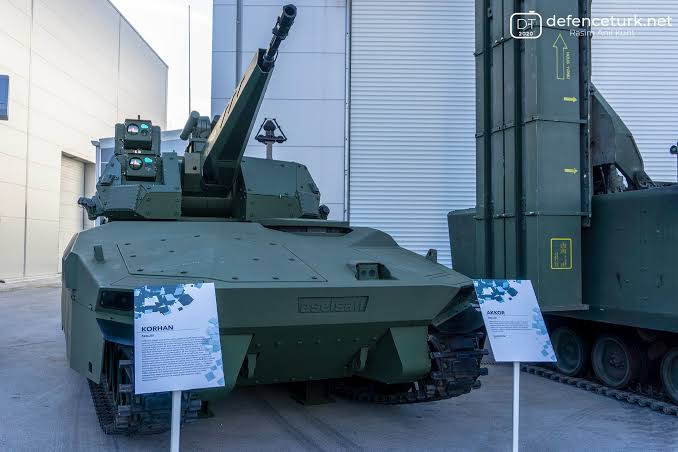
View attachment 10522
Rate of fire very important to create a barrage wall against cruise missiles. Turkish Army picked 35mm caliber because it uses programmable ammunition. 25 mm calibre auto cannon would neither generate high rate of fire as gatling gun nor suitable for programmable ammunition. So there are two alternatives single barrel 35 mm cal lighter auto cannon with 3P ammunition or 20mm gatling gun with high rate of fire. Americans know their shit that's why they use gatling gun.But twin 25mm ATOM could have been an awesome CIWS. I think Phallanx is atm the optimum CIWS and bare minimum our vessels should have.
I do hope we can get some punching power on our FAC, perhaps some loitering ammo, but what payload would it take for these to damage radar and sensors
If only this tweet made sense..
Gökdeniz is quite bulky and as the tweet says isn’t very adaptable on many naval platforms.
Gökdeniz is quite bulky and as the tweet says isn’t very adaptable on many naval platforms.
Not really an issue as long as covered with a RCS reduced canopy. It is already designed considering radar signature.Radar signature is a big issue too
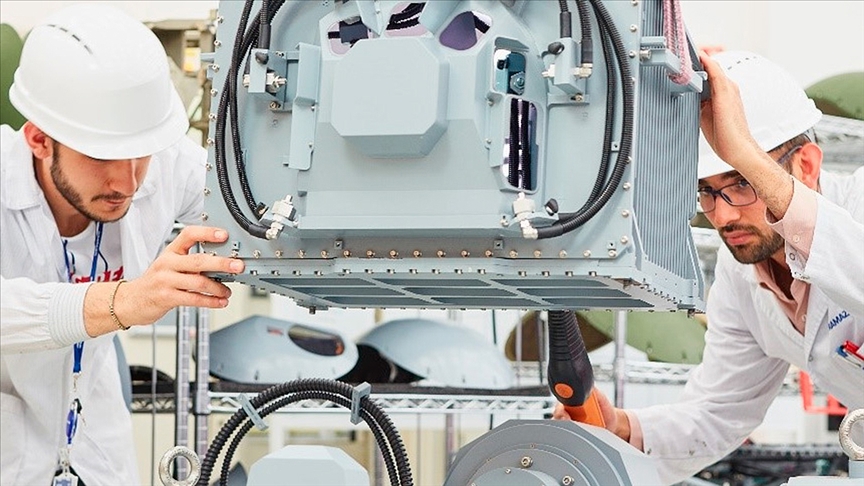

Turkey's largest warship to be seen by ASELSAN
According to the information received by the AA correspondent, the factory acceptance tests of the PIRI Infrared Search and Tracking System (KATS) developed by ASELSAN for the Multi-Purpose Amphibious Assault Ship TCG Anadolu, with the participation of the Presidential Defense Industry Presidency, ARMERKOM, Sedef Shipyard and ASELSAN personnel, the company's Akyurt Facilities' It was carried out in.
The Multi-Purpose Amphibious Assault Ship TCG Anadolu, which will be the largest platform of the Turkish Armed Forces when it is put into service, will constitute one of the most important systems for threat detection and tracking in port and cruise situation.
PIRI-KATS was developed as a high performance infrared search tracking system to passively detect and track air and sea vehicles and missiles for naval platforms. The system provides uninterrupted protection against threats thanks to its constantly looking sensors. Thanks to its simultaneous Dual-Band IR Imaging feature, PIRI-KATS functions as a full protection and warning system against all threats with its large rising field of vision in all weather and all light conditions.
First in the world
PIRI-KATS, the first dual-band infrared search and tracking system in the world, operating in medium wave (MW) and long wave (LW), was developed to provide 360 degrees of awareness to naval platforms, taking into account the needs of the Naval Forces Command and is fully compatible with the combat management system. it will serve as a detection and tracking system.
PIRI-KATS is the Sensor Unit, where the 120-degree image is collected with the help of external windows and transmitted to the detector with the help of optical paths, the Stabilization Unit used for detecting and tracking even in the most difficult sea conditions, and the Electronic Unit where the detection and tracking functions are performed. It consists of 3 main units.
The system, which provides 360 degree coverage with 3 sensors placed on the ship, allows the user to passively detect and follow in different sea conditions with its panoramic view.
New platforms in line
The system, which consists of more than 5 thousand sub-materials, is of special importance in terms of the technologies and products offered by ASELSAN, with its unique and domestic optical design and its ability to track 150 targets simultaneously.
The system will be added to the inventory with TCG Anadolu, which is planned to be delivered to the Naval Forces Command after the completion of integration, commissioning, port and sea acceptance tests. PIRI-KATS is also planned to be delivered within the scope of the Half-Life Modernization Project of Barbaros Class Frigates and the I-Class Frigate (MİLGEM-5) Project.

Türkiye'nin en büyük savaş gemisi ASELSAN ile görecek
ASELSAN'ın Çok Maksatlı Amfibi Hücum Gemisi TCG Anadolu için geliştirdiği PİRİ Kızılötesi Arama ve Takip Sistemi'nin (KATS) fabrika kabul testleri tamamlandı. - Anadolu Ajansıwww.aa.com.tr
